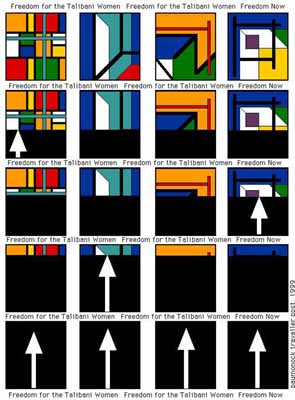|
MAIL ART IN THE CROSSROADS
In homage to David Cole, dead
April 19, 2000, by Clemente Padín The Mail Art between the one which was and the one which will be. The iron law of the system in operation: first the symbolic activity of the towns creates the artistic movements in order to mark absences and imperfections in the social texture and, then, the system, once past the iconoclast rage of the first moments, return them to its service, by means of the institucionalization and transforming in merchandise that had been created in order to attack it, subjecting it to the laws of the market. That´s the mechanic that made to claudicate and to perish many vanguards and all art type that has pretended to move the structures of the social-economic effective system. All the intents that art and artists have carried out for to change the system have claudicated in front of the power and the money. It is also sure that it agrees with the moment in that those subversive tendencies in the field of the social and the artistic activities, drain their initial impulse and the strenght of their proposals. That is to say, when their possibilities of contributing "new information" to the repertoires of the social knowledge, yield, exhausted. The strength of Mail Art, from its commencements by the middle of the 60s. (until half-filled of the 90s.), it was its bet for the communication and the relation between peoples. Above all its toil for an universal language, objective of all the utopias: the eternal and without borders communication. For this it was supposed to transfer the axis that maintained to the art in the sphere of the "change" in order to derive it to the sphere of the "use". The art work is left from the field of the merchandises to buy and sell for money in the market and it is transformed in an instrument of dialogue, in product of communication. This is the revolution of Mail Art. A cultural and artistic construction that aimed to the heart of the system upon obstructing the one which maintains it united: the money. And, also, upon denying its structure (the market) and its consequence (consumism). However, Mail Art is of this world and has evolved. To the view, nowadays, we are in front of the opening of new options starting from its increible wealth. The world, also, seems another from the moment in that Ray Johnson had the brillant idea, in the 60s., of sending his friends works without finishing so that they complete them and they forward to him (the "Add& Pass") and, arm so, his first expositions on Mail Art in New York. First the slow process of institucionalization of mediating of the 80s. when the cultural organisms, associate to the official art, like Galleries and Museums, began to organize expositions on Mail Art. Each Art Biennial felt headless if it doesn´t organized its own exposition of Mail Art. Each University felt in lack with its social environment if it doesn´t created classes Mail Art. After the sale of files...and goes on... Without a doubt, during any time will persist the two tendencies, the call "amateur" Mail Art ("weekend paint") and the professional one. The expositions carried out without economical support, for "love to art", and the gigantic expositions of thick and colored catalogs of the Institutions committed with the official apparatus: Galleries, Museums, National Posts and, above all, Associations of Philatelics that have imposed the gender "artistamp" like their movie star. On one hand the shows in where it is visible the contribution of mailartists overturned to the communication and, for another, the expositions organized by the establisment in where the critic and the juries impose the strickle of the "good gust". Before didn't matter that the level of the work out "good" or "bad" according to the commanding pleasure since the objective was the exchange, the fatic function of the artistic language, the communication; now, the Mail Art calls are personnels, not for the whole networking. Now they offer stipends to the guests in order to stimulate their participation and they are organizing similar expositions like the "Salon of the Book" that editorial industry organizes in order to favor the sale of its product, the book. Not very lacking for the competitions and rankings to the manner of the MTV. These reflections come to story of that, in the International Art Exposition of Jeju, carried out in the Island of the Peace (Jeju City) from South Korea from 18th to 27th October, 2001, the mailartists participants signed an Accord that puts in evidence this situation between Mail Art centered in communication and Mail Art centered in the market.
PREAMBLE We the undersigned, in agreement with the
above and with due respect to all
But, communication is communication. Nobody collects by corresponding with somebody. When people collects by speaking with somebody, the dialogue transforms in an interview. Between the dialogue and the interview there is all one fan of intermediate attitudes for the environment in which could exist the communication. It is sure that in professional Mail Art could exist the communication but, money, soon , swiftly, will impose its laws in order to make that communication transforms in a monologue, like it occurss in almost all current art. For it, Mail Art, I think, upon losing the feature that makes singular, the transformation of the art work of subject merchandise to the rules of the market in a product of communication, it will have quit being the one which is. David Cole, Chuck Welch alias Crackerjack Kid, Mrs. Cole, Fernand Barbot and Clemente Padín in the David´s home, New York, November, 1989 Montevideo, November of 2001 Clemente Padín: C. Correo
Central 1211, 1000 Montevideo, Uruguay
|



